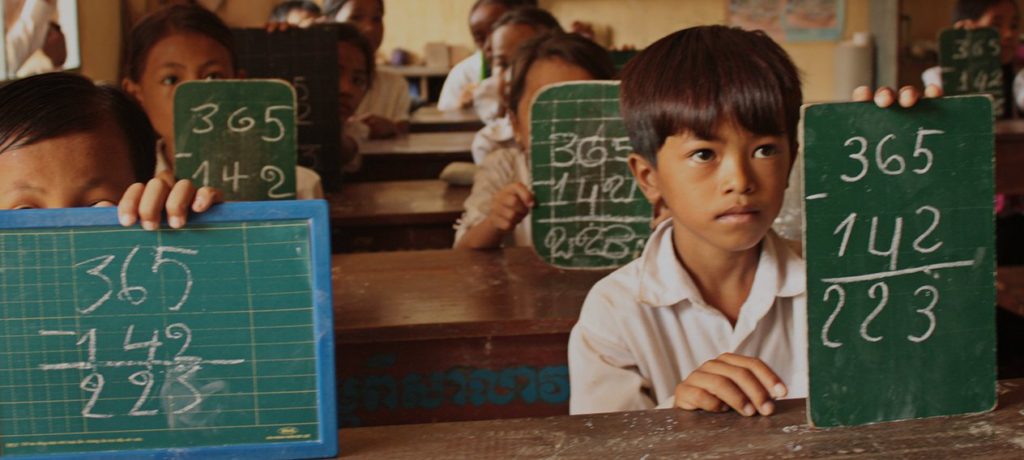QUALITY EDUCATION
- (Relevant for Sociology Syllabus: Paper 1- Social Change in Modern Society & Paper 2- Visions of Social Change in India)
- (Relevant for GS Syllabus: Paper1- Social empowerment)

- In India, at present, there are numerous government schools. However, the education one gets in government schools, specifically in rural areas and in private schools, is way more different in quality aspects.
The Government initiatives aim to provide education to all children despite their economic condition, status, and cast.
- Nevertheless, lower quality education in government schools is majorly due to teachers. Also, due to the lack of technological advancement of government schools, the quality of education is differing, and equality of education, a part of Social Equity, has not yet been achieved.
- The creation of historical legislation such as ‘The Rights of Children to Free and Compulsory Education Act’ has generated high expectations for providing free and compulsory education and increasing educational standards. Since 2001-02, Sarva Siksha Abhiyan has focused on quality education, universal education applicability beyond social or gender bias, and community participation.
- The various INITIATIVES are e-Pathshala, DIKSHA, National Repository of Open Educational Resource (NROER), National Programme on Technology Enhanced Learning (NPTEL), e-pgpathshala SWAYAM and, SWAYAM-Prabha DTH Channels.
- All these have developed to encourage digital learning, keeping pace with the enthusiasm for technology-enabled learning. Implementing these initiatives is to increase teaching standards regardless of the schools and institutes’ location.
- The Government has adopted and applied the Act in the right place to provide all with quality elementary education. Except for a handful, most schools can achieve the necessary facilities, but they are far behind the curriculum, evaluation, teacher training, technological advancement, and other related problems.
- The results of various studies show that there has been some improvement Nation needs to go a long way towards ensuring quality education in the area of student learning.only in terms of enrollment / necessary infrastructure so far. However, the
- Nudge Strategy: A nudge is any component of the choice architecture that predictably alters people’s actions without preventing any alternatives or substantially altering their economic consequences.
- Implementing the nudge strategy can be done in several ways to improve teachers’ behaviour in government schools. First, make a video of the students who are really in a bad situation after passing or dropped out of government schools and showing them to all government school teachers. Second, putting up a poster at all schools’ entrance showing the importance of a single teacher contributing to shaping the students’ future.
- Even State Governments can organize a one- or two-day event that can be made mandatory for heads of all government schools. That event will show passed-out students’ statistics reports to get a clear picture of how students are doing after school.
- Another thing that can be adopted is, each government school should use one mobile application. Before their lecture, teachers should put the topics they will teach and post-lecture, they should have to give feedback on the response they got from their students on that specific topic.
- By doing so, teachers will unconsciously feel responsible for shaping students’ careers. Due to that, they will increase their inputs and work with more enthusiasm for students’ betterment. They will get motivation, which eventually leads to giving their best, and hence the quality of education will increase at a more incredible speed.
- As they feel motivated, they try to learn newer technologies to deliver better and teach students with limited resources at the school.
- A person has freedom of choice; the proposed strategies will work only if the teachers are willing to adopt it; otherwise, it will not produce a significant result. After implementing the strategies, there must be a body or group responsible for seeing whether the implementation has been done appropriately or not and should be responsible for correcting the flaw as and when required.
- They also need to see whether these strategies generate an expected result because it would not work in the condition where the implementation context will change.
- While implementing these strategies, one should consider that the potential outcome should be above and beyond the short-term goal. Designing these strategies would help get immediate results, but it is also essential to think about secondary and long-term effects. Otherwise, it will only give temporary outcomes and might not work beyond a specific period. Another thing that can restrict the implementation is the cost, as it should be cost-effective. Otherwise, it would be infeasible to implement.
- If these strategies give the desired outcome, it will diminish the gap between the Government and private schools in terms of quality of education.
- The only factor is the supportive environment in which these strategies will implement; a person’s behavior will change as the environment is changing. The implementation is not the solution but to strive for getting the solution as and when required is the most crucial aspect.

